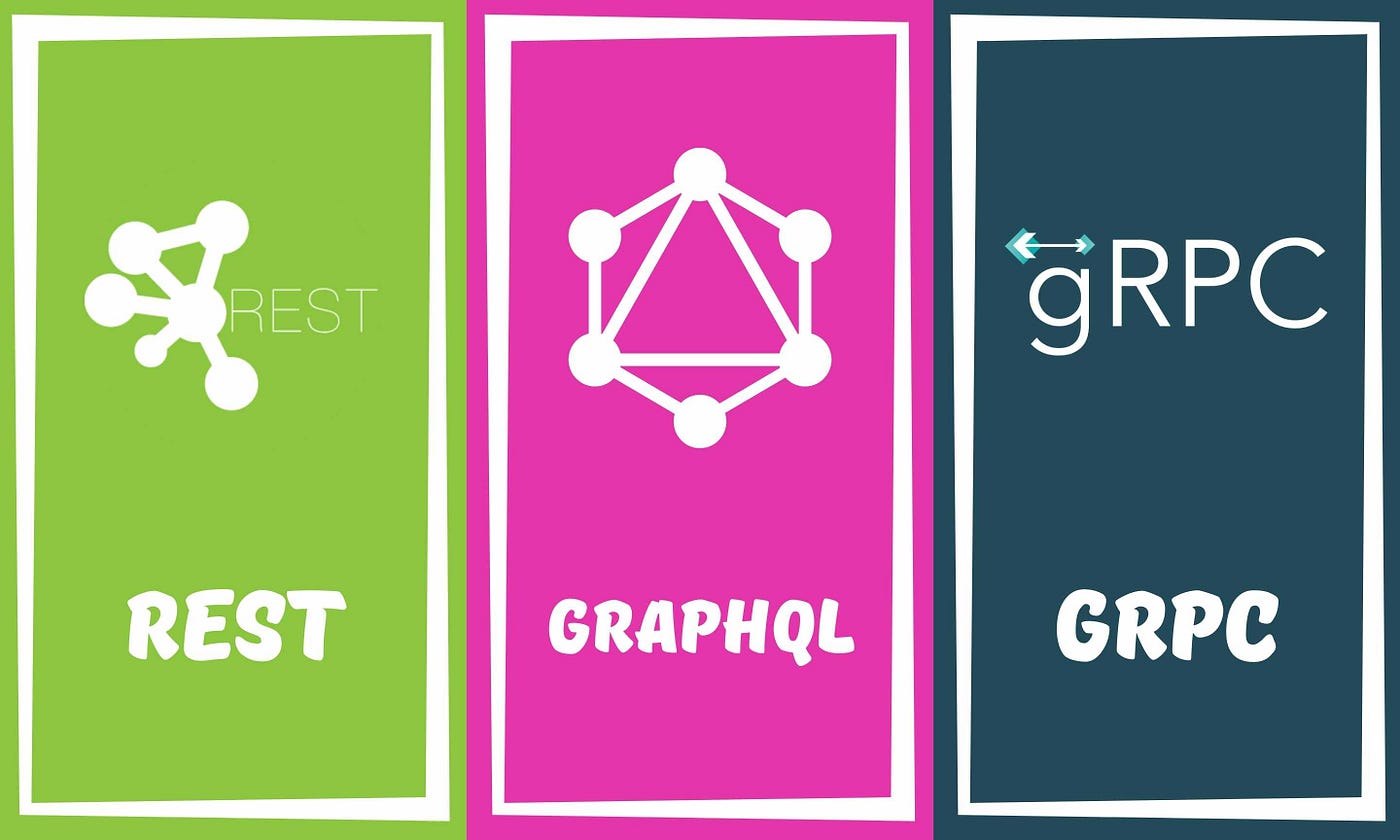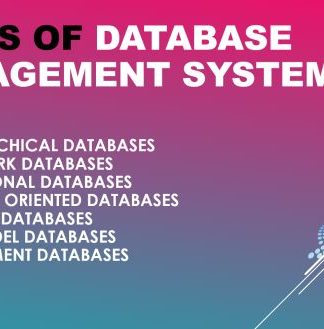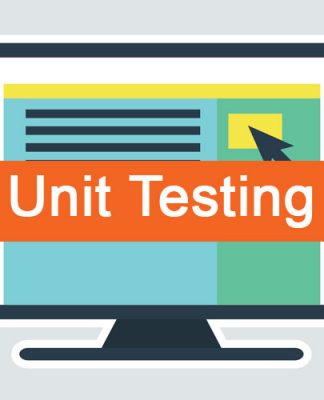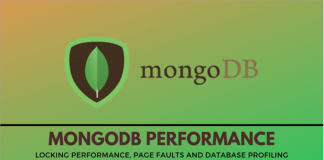Building APIs is one of the most important tasks for developers in modern engineering. These APIs allow different systems to communicate and exchange data. While REST has been the de facto standard for implementing APIs for many years, new emerging standards, such as gRPC and GraphQL, are available today.
What is an API?
The “Application Programming Interface” (API) is a communication channel between various software services. Applications that transmit requests and responses are called clients and servers, respectively. An API is an external software component that makes program functionality available to other programs.
In the honey bee 🐝 illustration below, the flower serves as the server, the hive serves as the client, and the bee provides the means of communication (REST API request).

Different API architectures or protocols exist, such as REST, gRPC, and GraphQL.
Why is gRPC important?
gRPC is a high-performance, open-source, universal remote procedure call (RPC) framework developed by Google. It uses Protocol Buffers (protobuf) as its interface definition language. Protocol buffers are a very effective and quick way to serialize data over a network. This technology implements an RPC API using the HTTP 2.0 protocol; however, neither the server nor the API developer can access HTTP. It follows a client-response communication model, which supports bidirectional communication and streaming due to gRPC’s ability to receive multiple requests from several clients and handle them simultaneously. Yet, gRPC is still quite limited when it comes to browser support.
As mentioned, gRPC uses Protocol Buffers by default to serialize payload data. Protocol Buffers are compact binary serialization formats for structured data. Using a schema defined in .proto files, they allow for efficient encoding and decoding across various languages. They offer advantages like smaller size and faster processing than traditional JSON or XML.
Advantages of gRPC:
- Speed. Thanks to HTTP/2, gRPC is faster and more efficient than REST over HTTP/1.1.
- Polyglot. Provides tools to generate client and server code in many languages.
- Streaming: Supports bidirectional streaming, allowing for more interactive real-time communication.
- Deadlines/Timeouts: Built-in support ensures requests don’t hang. It automatically solves retries, network issues, etc.
- Ecosystem: Supports authentication, load balancing, etc.
Drawbacks of gRPC:
- Complex: You must understand Protocol Buffers and the gRPC API. A schema must also be defined upfront.
- Limited Browser Support: Native browser support is limited due to reliance on HTTP/2.
- Tooling: While growing, gRPC tooling is less mature than REST’s. You can use gRPCurl or Postman to test such APIs.
- Not human-readable: Because they are binary, they are difficult to debug, as you can with text-based formats (such as XML or JSON).

What are Protocol Buffers?
Protocol Buffers, often abbreviated as Protobuf, was a method Google devised in 2008. for serializing structured data, similar to XML or JSON, they’re leaner and faster as they are binary, making them a go-to for applications that communicate with servers or store data efficiently.
Data serialization with Protocol Buffers involves a few steps:
Define Data Structure: You start by defining the structure of your data in a
.protofile. This includes specifying the types of data (integers, strings, booleans, custom types, etc.) and their field numbers.For example:

2. Generate Source Code: Use the Protocol Buffers compiler (
protoc) to generate source code from the file in your desired language. The compiler can generate code for various languages, including Java, C++, Python, and more.3. Generate executable package: The executable package is also generated and deployed with the source files produced by the Protobuf code. Messages are serialized and compressed in binary format at runtime.
4. Deserialization: When the recipient receives a serialized data stream, they can easily convert it back into a structured format using the generated classes.
What is a REST API?
REST (Representational State Transfer) is not a framework or a library but an architectural style for building web services and APIs. In REST, everything is a resource identified by a unique URL, and these resources are manipulated using HTTP methods such as GET (to retrieve a resource), POST (to create a new resource), PUT or PATCH (to update a resource), and DELETE (to remove a resource).
Each request from client to server must contain all the information needed to understand and complete the request. The server does not store client context between requests, simplifying design and improving scalability. The client and server’s HTTP request and response bodies carry JSON or XML representations of a resource’s status.
In his doctoral dissertation, computer scientist Roy Fielding introduced and defined representational state transfer in 2000.
Benefits of REST APIs:
- Simplicity: Using standard HTTP methods and common data formats makes REST APIs easy to understand and implement.
- Interoperability: REST APIs promote interoperability as different applications can interact seamlessly regardless of the programming languages or platforms used.
- Scalability: The stateless nature of REST APIs allows for easy scaling to handle large volumes of requests.
- Flexibility: REST APIs can be adapted to various use cases due to their versatile design principles.
Drawbacks of REST APIs:
- Statelessness: REST relies on stateless transactions, meaning each request must complete all the information independently. This can be cumbersome for workflows that require maintaining state across multiple requests, like shopping carts on e-commerce sites.
- Limited payload size: Data transfer in REST often happens through JSON or XML payloads, which can become quite large if you’re dealing with complex data or many queries. This can lead to performance issues.
- Lack of discoverability: REST APIs don’t inherently make it easy for users to understand their functionality or how to interact with them, which can add complexity for new users.
- Performance for complex queries: REST might not be ideal for retrieving specific data points from a larger resource. Other options, like GraphQL, can be more efficient in such cases.
REST defines six architectural constraints an API should follow to be considered genuinely RESTful:
- Client-Server: This separation of concerns separates the client (the application using the API) from the server (the application providing the API). The client initiates requests, and the server processes them and sends responses.
- Stateless: Each request from the client to the server must contain all the information necessary to understand the request. The server doesn’t store any context about the client between requests. This simplifies communication and improves scalability.
- Uniform Interface: This constraint defines a set of rules for how clients interact with the server. These rules include:
- Resource-based: APIs expose resources that clients can interact with. URLs identify resources.
- Standard methods: Clients use standard HTTP methods (GET, POST, PUT, DELETE) to perform operations on resources.
- Representation: Data is exchanged between client and server in a standard format like JSON or XML.
4. Cacheable: The client may mark server responses as cacheable. This allows clients to store frequently accessed data locally, reducing server load and improving performance.
5. Layered System: The architecture may consist of multiple layers (proxies, caches, load balancers) between the client and server. These layers can improve performance, security, and scalability.
6. Code on Demand (Optional): While not strictly mandatory, a RESTful API may optionally transfer executable code to the client. Clients can use this code to extend its functionality or process data locally.

An example of a REST API call for the API on the https://api.example.com address when we want to get the info about the user with ID 500 is the following by using curl command-line tool: curl -X GET https://api.example.com/users/500 -H "Accept: application/json". The last part (Accept: application/json) is a header that indicates that the client expects to receive the data in JSON format. A response would be the result in the JSON format, and 200 would be a response status code.

Even though REST is not the best choice when performances are essential, we can do a few things here, such as caching, pagination, payload compression, and more.
What is GraphQL?
GraphQL is a query language for APIs released and open-sourced in 2015 by Meta. The GraphQL Foundation now oversees it. GraphQL is a server-side runtime environment that enables clients to request the data they need from an API. Unlike traditional REST APIs, which often require multiple requests to fetch different pieces of data, GraphQL allows you to specify all the data you need in a single request. The GraphQL specification was open-sourced in 2015.
Because GraphQL doesn’t over- or under-fetch results when queries are sent to your API, it guarantees that apps built with GraphQL are scalable, fast, and stable. It also allows for combining multiple operations into a single HTTP request.
GraphQL APIs are organized in terms of types and fields, not endpoints. Using the GraphQL Schema Definition Language (SDL), you define your data as a schema. This schema serves as a contract between the client and the server, detailing precisely what queries can be made, what types of data can be fetched, and what the responses will look like.
Benefits of GraphQL:
- Efficient data fetching: You only request the exact data you need, eliminating the issue of over-fetching or under-fetching that can happen with REST. This can significantly improve performance, especially for complex data models.
- Flexible and declarative: GraphQL uses a schema that defines the available data and how to access it. This schema allows developers to write clear and concise queries that specify their exact data needs.
- Single request for multiple resources: Unlike REST, which requires multiple API calls to fetch data from different endpoints, GraphQL allows combining queries into a single request for improved efficiency.
- Versioning and Backward Compatibility: GraphQL schema changes can be implemented with versioning, ensuring existing clients aren’t affected while allowing for future growth.
Drawbacks of GraphQL:
- Complexity in query structure: While flexibility is a strength, writing complex GraphQL queries can be challenging and requires careful planning for readability and maintainability.
- Caching: Caching data with GraphQL is generally more complex than REST APIs, which leverage built-in HTTP caching mechanisms.
- Security: GraphQL exposes your entire data schema, so proper security measures are crucial to prevent unauthorized access to sensitive data.
- Learning Curve: For developers unfamiliar with GraphQL, understanding the schema and query syntax involves a learning curve.
- Error handling: If the library doesn’t parse errors with a status of 200 in the response body, the client must use more intricate logic to handle them.
How it works:
- The client defines a query in GraphQL syntax, specifying exactly how the data should be structured and what fields are needed.
- The GraphQL server uses a predefined schema to determine the available data and its relationships to other data. This schema defines types, fields, and the relationships between types.
- The server executes the query against the schema. For each field in the query, the server has a corresponding resolver function that fetches the data for that field.
- The server returns a JSON object where the shape directly mirrors the query, populated with the requested data.

GraphQL supports three core operations that define how clients interact with the server:
- Queries: Used to retrieve data from the server. This is the most common operation used in GraphQL.
- Mutations modify data on the server. This could involve creating new data, updating existing data, or deleting data.
- Subscriptions are used to establish real-time communication between the client and server. The server can then update the client whenever the requested data changes.
An example of a GraphQL request consists of an operation and the data you’re requesting or manipulating, e.g.

This query retrieves data for a user with ID 1. It also fetches nested data for that user’s posts, including their IDs and titles.
The response is a JSON object containing actual data requested by the query or mutation and optional errors.

To learn more about GraphQL, check the book “Learning GraphQL” by Eve Porcello and Alex Banks.
When should you use GraphQL, gRPC, and REST?
Developers can pick from a variety of client-server communication protocols when it comes to designing an application. Utilizing GraphQL, gRPC, and REST is relatively common in contemporary projects. Each protocol can provide various advantages depending on your application’s requirements.
- GraphQL is a flexible approach for making data requests that focuses on specific requests and provides only necessary ones. Its client-driven nature distinguishes it from other APIs. The client makes all the decisions instead of handling them. GraphQL’s advantages are that it is language agnostic, requests are made through a single endpoint, and strongly typed, as it has schemas.
- REST is the most popular one. It is a great fit when a domain can be described as a set of resources. REST is a stateless architecture for data transfer. Its advantages include being a well-established standard, simple use, and good caching support.
- gRPC is a lightweight and rapid system for obtaining data. Here, the primary distinction is how it describes its contract negotiations. It relies on contracts; the architecture is not what governs the negotiation; it is the relationship between the server and the client. While handling and calculations are delegated to a remote server housing the resource, most power is used on the client side. Its main advantages are that it has lightweight clients, is highly efficient, uses protocol buffers to send/receive data, and is open source, too.
The timeline of the most common API architectural styles is shown in the image below.

API Architectural Styles Timeline
So, when to choose each of those protocols:
✅ Use REST if you’re building a CRUD-style web application or you work with well-structured data. It’s the go-to for public APIs and services that need to be consumed by a broad range of clients.
✅ Use gRPC if your API is private and about actions or if performance is essential. Low latency is critical for server-to-server communication. Its use of HTTP/2 and ProtoBuf optimizes efficiency and speed.
✅ Use GraphQL if you have a public API that needs to be flexible in customizing requests and want to add data from different sources into a public API. Use it in client-server communication, where we must get all the data on a single round trip.



















